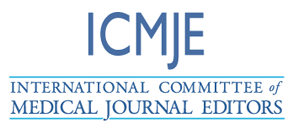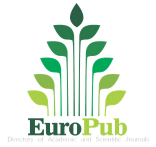Role of Physical Therapy in Managing Restless Leg Syndrome
DOI:
https://doi.org/10.55677/IJCSMR/V5I3-07/2025Keywords:
Restless leg syndrome, physical therapy, exercises, strengthening, strechingAbstract
Restless Leg Syndrome (RLS) is a neurological disorder that is sensorimotor in nature characterized by a sudden and uncontrollable urge to move the legs. [1] The syndrome was described by Swedish neurologist Ekbom for the first time in the year 1945. [2] It is characterised by unpleasant sensations in the legs (paraesthesia). [3] Various different therapies and techniques can be used for the treatment of RLS like compression devices, light therapy, acupuncture, exercise therapy, yoga. [4] Physical therapy plays a crucial role in the management of RLS by addressing underlying musculoskeletal issues, improving circulation, and promoting relaxation. Key interventions include targeted stretching, aerobic and strengthening exercises, massage therapy, and relaxation techniques such as yoga and tai chi. [5][6] These interventions help reduce the severity and frequency of symptoms, enhance sleep quality, and improve overall quality of life. Physical therapy, as part of a multidisciplinary approach, can significantly benefit individuals with RLS by complementing pharmacological treatments and lifestyle modifications.
References
Manconi, M., Garcia-Borreguero, D., Schormair, B., Videnovic, A., Berger, K., Ferri, R., & Dauvilliers, Y. (2021). Restless legs syndrome. Nature reviews Disease primers, 7(1), 80.
Allen, R. P., Picchietti, D., Hening, W. A., Trenkwalder, C., Walters, A. S., & Montplaisi, J. (2003). Restless legs syndrome: diagnostic criteria, special considerations, and epidemiology: a report from the restless legs syndrome diagnosis and epidemiology workshop at the National Institutes of Health. Sleep medicine, 4(2), 101-119.
Ekbom, K., & Ulfberg, J. (2009). Restless legs syndrome. Journal of internal medicine, 266(5), 419-431.
Xu, X. M., Liu, Y., Jia, S. Y., Dong, M. X., Cao, D., & Wei, Y. D. (2018). Complementary and alternative therapies for restless legs syndrome: an evidence-based systematic review. Sleep medicine reviews, 38, 158-167.
Çoban, Ö., Ün Yıldırım, N., Yaşa, M. E., & Sonkaya, A. R. (2023). Effects of Different Exercise Programs on Symptoms, Sleep, and Quality of Life in Patients with Primary Restless Legs Syndrome. Movement Disorders Clinical Practice, 10(9), 1349-1359.
Harrison, E. G., Keating, J. L., & Morgan, P. E. (2019). Non-pharmacological interventions for restless legs syndrome: a systematic review of randomised controlled trials. Disability and rehabilitation, 41(17), 2006-2014.
Allen, R. P., Walters, A. S., Montplaisir, J., Hening, W., Myers, A., Bell, T. J., & Ferini-Strambi, L. (2005). Restless legs syndrome prevalence and impact: REST general population study. Archives of internal medicine, 165(11), 1286-1292.
Ohayon, M. M., O’Hara, R., & Vitiello, M. V. (2012). Epidemiology of restless legs syndrome: a synthesis of the literature. Sleep medicine reviews, 16(4), 283-295.
Chaudhuri, K. R., & Meilak, C. (2004). What is restless legs syndrome?. In Restless Legs Syndrome (pp. 13-20). CRC Press.
Leschziner, G., & Gringras, P. (2012). Restless legs syndrome. Bmj, 344.
Trenkwalder, C., Paulus, W., & Walters, A. S. (2005). The restless legs syndrome. The lancet neurology, 4(8), 465-475.
Gossard, T. R., Trotti, L. M., Videnovic, A., & St Louis, E. K. (2021). Restless legs syndrome: contemporary diagnosis and treatment. Neurotherapeutics, 18(1), 140-155.
Harrison, E. G., Keating, J. L., & Morgan, P. E. (2019). Non-pharmacological interventions for restless legs syndrome: a systematic review of randomised controlled trials. Disability and rehabilitation, 41(17), 2006-2014.
Bahgat, A. A. A. 2. Z., & Algendy, A. (2019). Effect of muscles stretching exercises on severity of restless legs syndrome of adult patients undergoing hemodialysis. Journal of Health, Medicine and Nursing. An International Peer-reviewed Journal, 68.
Aukerman, M. M., Aukerman, D., Bayard, M., Tudiver, F., Thorp, L., & Bailey, B. (2006). Exercise and restless legs syndrome: a randomized controlled trial. The Journal of the American Board of Family Medicine, 19(5), 487-493.
Kumaran, B., Targett, D., & Watson, T. (2022). The effect of an 8-week treatment program using a novel foot neuromuscular electrical stimulator on physical function, leg pain, leg symptoms, and leg blood flow in community-dwelling older adults: a randomized sham-controlled trial. Trials, 23(1), 873.
Akbaş, P., & Yaman Sözbir, Ş. (2021). Non-pharmacological methods used in coping with restless leg syndrome (RLS): a systematic review. Sleep and Biological Rhythms, 19(3), 215-225.
Downloads
Published
Issue
Section
License
Copyright (c) 2025 International Journal of Clinical Science and Medical Research

This work is licensed under a Creative Commons Attribution 4.0 International License.











